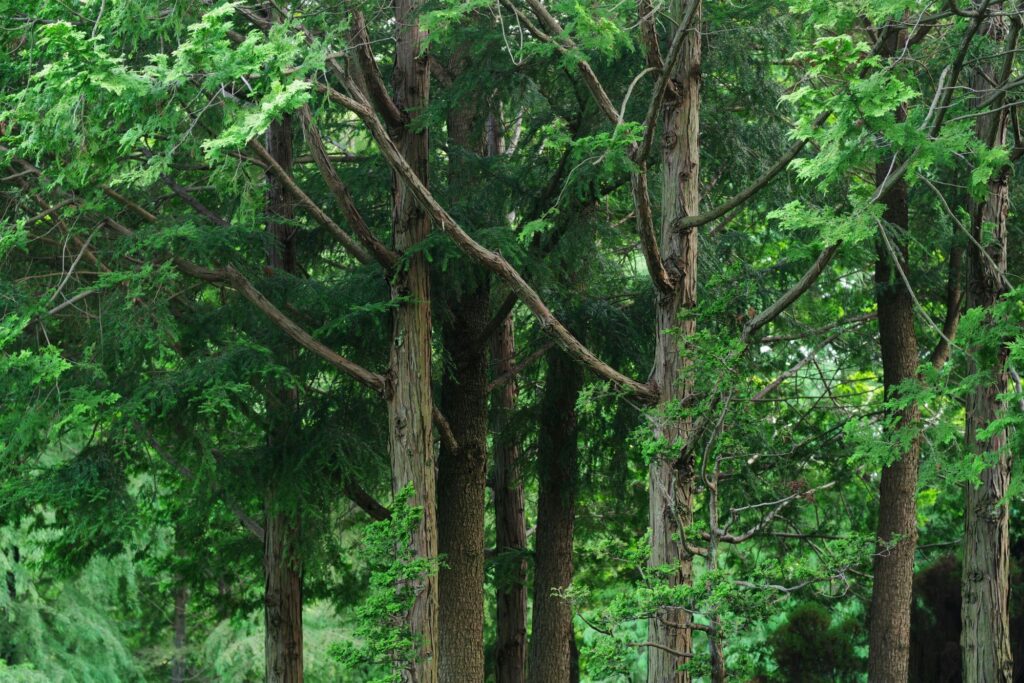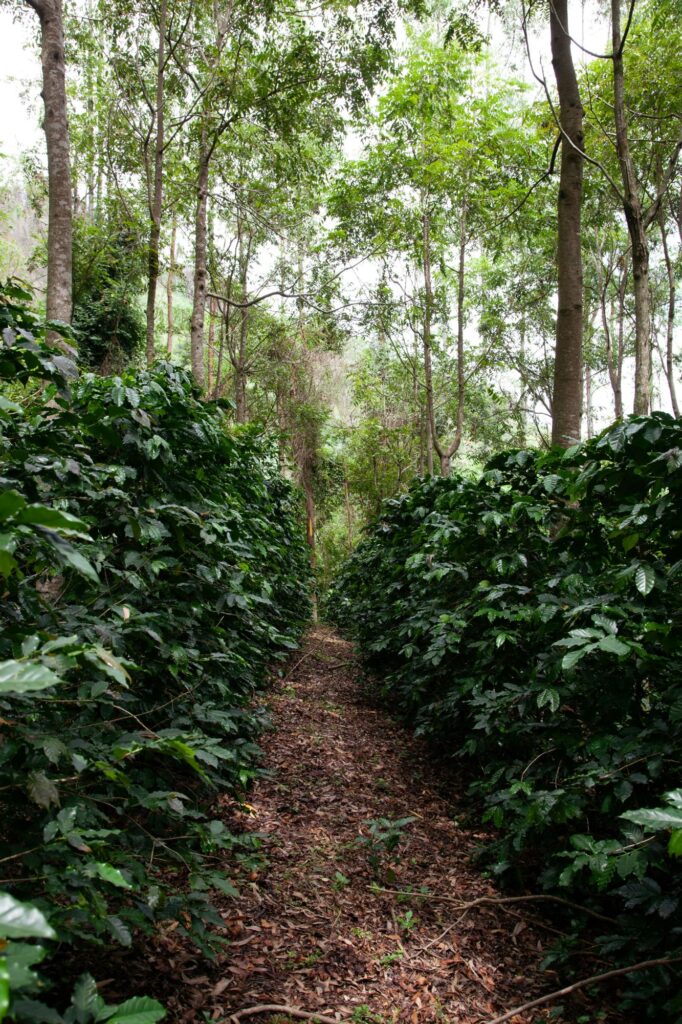
In the global fight against climate change, carbon farming has emerged as a practical and profitable way to capture carbon from the atmosphere while restoring degraded ecosystems. At the heart of this movement lies smart agroforestry—the intentional integration of trees and shrubs into crop and livestock systems—to maximize both environmental and economic benefits.
This post explores how farmers, agroforestry practitioners, and landowners can increase Carbon Reduction Units (CRUs) through strategic tree-based systems while actively contributing to the organic restoration of nature.
What Is Carbon Farming?
Carbon farming involves implementing agricultural and land use practices that increase the storage of carbon in vegetation and soil, or reduce greenhouse gas emissions. These practices are measurable and can earn farmers Carbon Reduction Units (CRUs), which are tradable credits in carbon markets.
When combined with agroforestry, carbon farming becomes even more effective, as trees act as long-term carbon sinks and offer ecological benefits like improved biodiversity, water retention, and microclimate regulation.
The Role of Smart Agroforestry in CRU Generation
Smart agroforestry is not just about planting trees—it’s about designing land systems that maximize carbon uptake and soil health. By using the right species, managing them properly, and integrating them into farm activities, agroforestry becomes a tool for both carbon sequestration and organic land restoration. Some of the most effective systems include:
Silvopasture: Trees combined with grazing livestock.
Alley Cropping: Planting rows of trees between crops.
Forest Farming: Cultivating non-timber forest products under a managed tree canopy.
How to Increase Carbon Reduction Units with Agroforestry
Here are proven practices to help you generate more CRUs and reduce emissions at the same time:
1. Choose the Right Tree Species
To increase your carbon reduction units effectively, selecting the right mix of trees is essential. Focus on a combination of fast-growing, deep-rooted, and especially indigenous (native) species that are well-adapted to your local climate and soil conditions.

Why Indigenous Trees?
Native species are often more resilient, require less maintenance, and are better suited for long-term ecosystem stability. They support local biodiversity and restore ecological balance—making them ideal for both carbon sequestration and organic restoration. The following are examples of some of the valuable indigenous trees by region:
Africa:
Acacia spp. – Fast-growing nitrogen fixers, ideal for drylands.
Baobab (Adansonia digitata): High biomass, long-lived, and beneficial for local ecosystems.
Marula (Sclerocarya birrea): Provides carbon storage and income through fruits/oils.
Albizia spp.: Rapid growth and excellent for agroforestry integration.
South Asia/India:
Neem (Azadirachta indica): Multi-purpose and drought-resistant.
Peepal (Ficus religiosa): Sacred and carbon-rich.
Banyan (Ficus benghalensis): Strong root network, good for soil stabilization.
Amla (Phyllanthus emblica): Offers carbon benefits and fruit value.
Latin America:
Ceiba pentandra (Kapok tree): High carbon storage and ecological significance.
Palo Verde (Parkinsonia spp.): Fast-growing and drought-tolerant.
Guazuma ulmifolia (Guacimo): Widely used in agroforestry for shade and fodder.
North America:
Oak (Quercus spp.): High biomass and longevity.
Maple (Acer spp.): Good for temperate climates.
Hickory (Carya spp.): Deep roots and solid carbon storage over time.
Always consult local forestry or agricultural extension services to confirm which species are best suited to your land and intended outcomes. Planting regionally appropriate, resilient trees maximizes your CRUs and supports lasting ecological regeneration.
2. Ensure Proper Spacing and Placement
Strategic layout improves sunlight use, reduces competition for resources, and increases total biomass. This leads to higher carbon capture per hectare.
3. Enrich Soil Organic Matter
Apply organic compost, manure, and cover crops to enhance microbial life and soil structure. Healthier soils store more carbon and reduce emissions from fertilizers.
4. Adopt Conservation Farming Techniques
Reduce tillage, avoid burning residues, and limit synthetic inputs. These practices preserve soil carbon and reduce your overall emissions footprint.
5. Integrate Livestock Carefully
If you practice silvopasture, manage grazing intensity to avoid overgrazing and soil degradation. Well-managed livestock can contribute to nutrient cycling and biomass production.
Best Practices for Tree Management in Agroforestry Projects
To maximize long-term carbon storage and ecosystem benefits, trees must be properly managed throughout the lifecycle of your carbon farming project:
– Monitor Tree Growth Regularly
Track height, diameter, and survival rates. Use data to assess carbon stock and report accurately for CRU certification.
– Practice Pruning and thinning
Maintain optimal density and remove weak or diseased branches. This supports healthier growth and stronger root development.
– Protect Against Pests, Fires, and Grazing
Implement natural pest control, firebreaks, and fencing to avoid losses that can set back carbon gains.
– Sustain Harvesting with Replanting
If you harvest timber or non-timber products, follow sustainable harvesting protocols and replant to maintain carbon balance.
The Bigger Picture: Organic Restoration Through Carbon Farming
Beyond carbon credits, smart agroforestry supports the organic restoration of nature by:
i. Rebuilding soil fertility
ii. Restoring native vegetation
iii. Enhancing water cycles
iv. Supporting pollinators and wildlife
These outcomes make farms more resilient, productive, and profitable in the long run—especially in regions vulnerable to climate shocks.
Conclusion
Carbon farming through smart agroforestry offers a powerful way to increase Carbon Reduction Units, reduce emissions, and bring degraded landscapes back to life. By adopting nature-based practices and managing trees effectively, farmers and landowners can benefit from climate-smart incomes while playing a vital role in healing the planet.
The future of farming is green—and it’s rooted in trees.

Disclosure: This banner contains an affiliate link. I may earn a commission if you purchase through it, at no extra cost to you.
